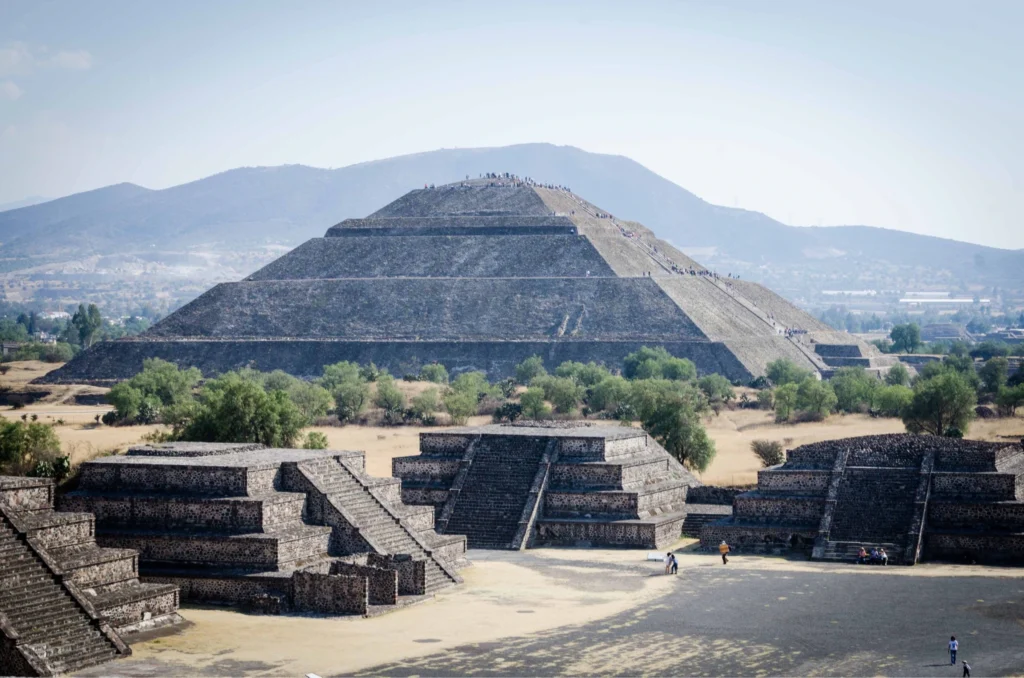
Monte Albán is one of the most impressive and significant archaeological sites in Mexico, offering a glimpse into the ancient Zapotec civilization. Situated atop a mountain in the Oaxaca Valley, Monte Albán is known for its vast and stunning ruins, which stand as a testament to the advanced society that once thrived here. As one of the most important pre-Columbian cities in Mesoamerica, Monte Albán holds a special place in history, culture, and archaeology. Visitors who make the journey to this ancient site will be able to explore a rich history, scenic views, and unparalleled architecture.
The Significance of Monte Albán
Monte Albán was the political and cultural center of the Zapotec civilization for more than a thousand years, from around 500 BCE to 800 CE. Its name, which means “White Mountain” in Spanish, was given due to the prominent white limestone rocks that were used in the construction of the buildings. The city sits on a flattened hilltop that offers panoramic views of the Oaxaca Valley, which was crucial for its strategic and cultural importance.
The Zapotecs were advanced in various areas including urban planning, architecture, and astronomy. The site features a unique blend of Mesoamerican influences, with its own distinctive style. One of the main attractions at Monte Albán is its grand plaza, which is surrounded by several impressive structures, including temples, pyramids, and ball courts. The ruins are also adorned with intricate carvings, stelae, and tombs that provide insight into the Zapotec belief systems, societal structure, and their understanding of the cosmos.
The Architecture and Layout of Monte Albán
The site itself is remarkably well-preserved, allowing visitors to explore a complex of plazas, temples, and tombs spread across a large area. The central plaza, called the “Grand Plaza,” is surrounded by several key structures, including the Platform of the Tombs and the Observatory, which reveal the civilization’s expertise in both engineering and astronomy. Visitors can also see the remains of the Great Pyramid, which served as a focal point for religious and ceremonial events.
Among the most famous structures at Monte Albán are the tombs that were discovered within the site. These tombs were richly adorned with murals, carvings, and ceramics, depicting the rulers and elites of the Zapotec civilization. Many of these tombs are still open for public viewing, offering a glimpse into the burial practices and social hierarchies of the time.
Additionally, the site’s ball courts—used for ritual ball games—are of great historical importance. These games held deep spiritual meaning and were often linked to cosmological beliefs and the relationship between the gods and the people. The ball court at Monte Albán is one of the most important Mesoamerican examples and is still an awe-inspiring feature of the site.
Monte Albán’s Role in Ancient Mesoamerica
Monte Albán was not only a cultural center for the Zapotecs but also a political hub for the region. It controlled much of the Oaxaca Valley, and its influence extended throughout southern Mesoamerica. As a result, Monte Albán became a vital trade and cultural exchange point. Its residents engaged in trade with neighboring cities and civilizations, exchanging goods such as jade, obsidian, and cacao.
Monte Albáns influence and significance are also highlighted in its interaction with other Mesoamerican cultures. The Zapotecs interacted with the Mixtecs, and over time, Monte Albán became a point of convergence for different cultural traditions, blending styles and ideas that contributed to the area’s vibrant history. Today, these interactions are visible in the intricate carvings and artifacts found throughout the ruins.
The Preservation of Monte Albán
Due to its historical importance, Monte Albán is a UNESCO World Heritage Site, which helps to preserve and protect the site for future generations. The Mexican government and various organizations have put significant effort into the conservation of the site, which continues to attract thousands of visitors annually. The site is an excellent example of how ancient Mesoamerican civilizations utilized their environment and resources to build monumental structures that have withstood the test of time.
The site also features a museum nearby, offering a deeper understanding of the archaeological discoveries at Monte Albán. Visitors can learn more about the artifacts unearthed from the tombs, the significance of the various carvings, and the historical timeline of the Zapotec civilization. This museum provides an enriching context to the experience of walking through the ruins.
Tips for Visiting Monte Albán
When planning a visit to Monte Albán, it’s important to remember that the site is located at a higher elevation, so visitors should be prepared for potential altitude effects. The climate can also be quite warm during the day, especially during the summer months, so wearing comfortable clothing, sunscreen, and a hat is recommended.
In terms of accommodation, Oaxaca City, located just 10 miles away from Monte Albán, is the most convenient base for exploring the ruins. Oaxaca offers a wide range of hotels and accommodations to suit all budgets. Whether you’re looking for a luxurious hotel or a more modest option, there are plenty of places to stay in Oaxaca. For a seamless travel experience, check out Skyscanner for affordable flights to Oaxaca and Booking.com for great deals on hotels in the city.
Visitors to Monte Albán should also take advantage of the opportunity to explore Oaxaca itself. The city is known for its vibrant markets, delicious cuisine, and rich cultural heritage. Don’t miss out on Oaxaca’s famous markets, such as Mercado 20 de Noviembre, where you can sample traditional Oaxacan dishes like tlayudas and mole. If you’re interested in experiencing local arts and crafts, Oaxaca’s artisan markets offer a wide selection of handmade goods, from textiles to pottery.
How to Get to Monte Albán
Monte Albán is easily accessible from Oaxaca City. You can reach the site by car, taxi, or even by joining one of the many organized tours available. The journey takes approximately 30 minutes, making it a perfect half-day or day trip. If you prefer a guided experience, many tours offer insights into the history and significance of Monte Albán, which can enrich your visit.
For those flying into Oaxaca, Skyscanner can help you find affordable flights to the city, while Booking.com offers a wide selection of hotels in the area. The combination of easy access to the site and a wide range of accommodation options makes Monte Albán an excellent destination for history enthusiasts, families, and solo travelers alike.
Conclusion
Monte Albán is a must-visit for anyone interested in the ancient civilizations of Mesoamerica. From its awe-inspiring architecture and historical significance to its breathtaking views and rich cultural context, the site offers a unique glimpse into the past. Whether you’re a history buff, an archaeology enthusiast, or simply someone who loves to explore ancient ruins, Monte Albán provides an unforgettable experience. Plan your visit today, and explore one of the most significant archaeological sites in Mexico.





